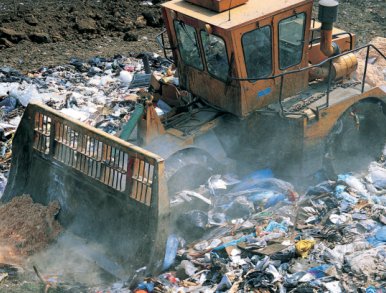When landfill waste degrades and rain rinses the resulting products out, leachate is formed. The black liquid contains organic and inorganic chemicals, heavy metals as well as pathogens; it can pollute the groundwater and therefore represents a health risk. Its composition varies a lot, both from time to time and from site to site so that it is difficult to treat the liquid in the right way. As Ana-Maria Schiopu and Maria Gavrilescu, Technical University Iasi, Romania, show in their review, new modeling computer programs help.
For example, software simulates the migration of contaminants from a landfill into the soil and the groundwater. It calculates the leachate’s travel time, its chemistry and how landfill lining systems perform. Thus, the software can determine the optimum thickness of clay barriers.
Nowadays, leachate can be recirculated into the landfill or it can be treated in sewage treatment plants. New inorganic polymers remove heavy metals as well as color and turbidity from the liquid. In any case, “an understanding of leachate composition is critical for making prognoses of the long-term impacts of landfill,” the authors write.
Photo: (C) Digital Vision
- Options for the Treatment and Management of Municipal Landfill Leachate: Common and Specific Issues
Ana-Maria Schiopu, Maria Gavrilescu
CLEAN – Soil, Air, Water 2010.
DOI: 10.1002/clen.200900184




